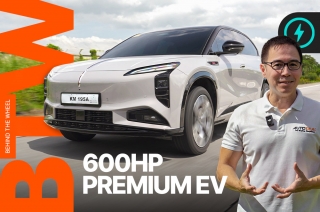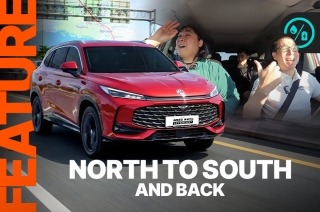Types of Green Vehicles: Hybrid, Hydrogen, and Electric – Behind a Desk
With a goal of cleaning up our atmosphere and making the world a better place, car manufacturers have begun to toy around and even succeed with some of these eco-friendly cars, with hybrids, hydrogen, and electric vehicles becoming the norm, hopefully soon too in the Philippines.
Cars are constantly evolving not only in terms of design but how they function as well. With ever-tightening emission regulation automotive manufacturers have had to get creative with what power sources they could use for their next-generation vehicles. Three clean energy sources have stood out among the rest. These are hybrid vehicles, electric vehicles, and fuel cell vehicles. Each one of these clean methods of propulsion has been steadily researched by car companies and have been met with major advancements in research. With that said this is the tech that powers the green cars of today.
Electric vehicles
These are vehicles that are powered by batteries that are connected to an electric motor. These batteries can be charged via designated high speed charging stations or via your wall socket at home.
While these vehicles do not directly produce emissions, however, it does have one drawback - the charging time. The time it takes to get a battery to fully depends on the type of charging being used on the vehicle. Designated high speed charging stations do have the ability at best to get an electric vehicle (EV) charged to full in about 30 minutes, however, a normal wall plug based charger will take substantially longer. An example of an EV is the Nissan LEAF and the Tesla range of vehicles as well as the Mercedes Benz EQC.
One advantage of having an EV is their near-instantaneous delivery of power. At the push of the throttle, all the torque is let out. This makes EVs quick off the line and performance versions can even out-accelerate supercars. An example of this is the Tesla Model S P100D which can hit 100 kilometers per hour in under 2.5 seconds. Mind-blowing speed for a clean and futuristic car.
Fuel cell vehicles
Fuel cell vehicles (FCEVs), you guessed it, are powered by fuel cells. These can be powered by many kinds of gases but the cleanest option is hydrogen. These vehicles use an electrochemical reaction. The hydrogen fuses together with the oxygen atoms found in the air and through this processing electricity are released. This electricity is then captured and stored in the FCEV’s battery. The byproduct of all of these chemical reactions is just plain harmless droplets of water.
One drawback of this kind of vehicle is its fuel source. Hydrogen is still expensive to produce even in developed countries in which these vehicles are available for purchase. Hydrogen fuel refilling stations are also still a rare sight making it hard for those who own a vehicle and want to make sure their vehicle is always topped up. Unlike EVs, however, these do not take long to fill up. They fill up just as quickly as their internal combustion engine counterparts in a matter of minutes you will have a full tank. Current vehicles available on the market are the Toyota Mirai Honda Clarity, and the Hyundai Nexo.
Hybrids electric vehicles
While these kinds of clean vehicles are still rare in the Philippines these are actually one of the most readily available in the country. As the name states hybrid vehicles put together two things. These two things are an electric motor and an internal combustion engine. Together they lower emissions and improve fuel efficiency. In order to do this, the vehicle will enter EV mode at low speeds making use of the electric motor and its battery pack. When the batteries run dry or when more power is needed the fossil fuel engine comes online to provide more power. The vehicle’s battery pack cannot be charged externally but can be charged through the use of the internal combustion motor or through regenerative braking. Examples of these vehicles in the country include the Toyota Prius, Corolla Altis Hybrid, and the Hyundai Ioniq.
Plug-in hybrid electric vehicles
Out of the clean energy sources for the vehicles of today, this is the most versatile. PHEVs have all the benefits of a full hybrid but with the added bonus of recharging its batteries via a wall socket at home. In doing so it lets the vehicle extend its electric-only mode while not in use. It also benefits from regenerative braking further increasing its range. When the batteries run dry and there is no charging station in sight the combustion motor will kick in to recharge the batteries. An example of this is the BMW-i8, the plug-in version of the Toyota Prius, and Honda Insight.
Further hybrid categories
Hybrid vehicles are further subdivided into two categories the Series and Parallel. Parallel hybrid vehicles allow the electric motor and the combustion engine to work together to give the vehicle power. This means that both motors have access to the vehicle’s transmission and one or the other can drive the vehicle at any given time. A controller within the vehicle’s transmission determines when to operate the electric motor or when to switch to the combustion engine.
A series of hybrid works by prioritizing the use of the electric motor only. It is the sole power plant that is responsible for the propulsion of the vehicle. The electric motor runs on the vehicle’s internal battery pack which is then recharged through either regenerative braking or through a generator. The combustion engine does not have access to power the vehicle and as such it only acts as a range extender. Similar to that of a parallel hybrid a controller in the transmission determines how much power is needed to get the vehicle going. It will also figure out if it should get power from the battery pack or from the generator.











